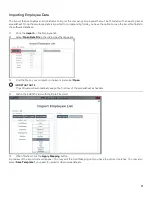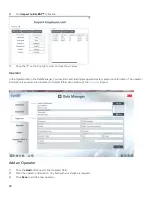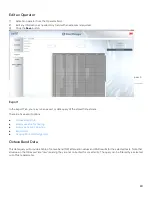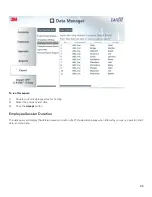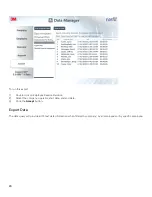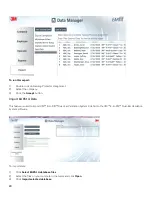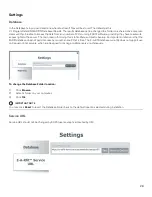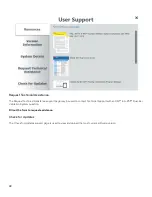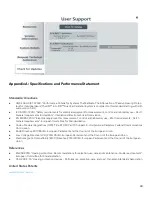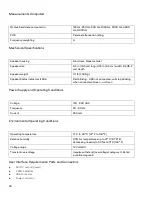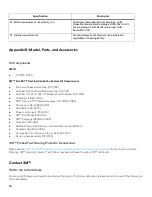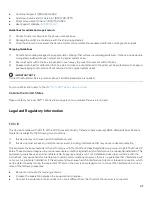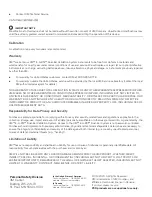
35
System Requirements
•
1GHz or faster processor
•
Microsoft Windows 10 (32-bit and 64-bit), Windows 8 (32-bit and 64-bit), Windows 7 Professional (32-bit and 64-bit),
or Microsoft .NET Framework (Net4Full 4.0.30319.1, Net4Client)
•
1GB of RAM (32-bit) or 2GB of RAM (64-bit)
•
100MB of available hard-disk space
•
1024x768 display resolution (minimum)
•
USB port
•
Pointing device or mouse
•
Internet connection (for User Support materials)
Performance Statement (per ANSI/ASA S12.71-2018)
The information in this table is provided to meet compliance requirements for Field Attenuation Estimation Systems (fit test
systems) that report a PAR according to ANSI/ASA S12.71-2018
American National Standard Performance Criteria for
Systems that Estimate the Attenuation of Passive Hearing Protectors for Individual Users.
ANSI/ASA S12.71-2018. “Performance Criteria for Systems That Estimate The Attenuation of Passive Hearing Protectors for
Individual Users (starting with version 5.9.1). The principal change required by the new ANSI/ASA standard applies to how the
uncertainty value is handled. By default, the 3M™ E-A-Rfit™ Dual-Ear Validation System has always taken a conservative
approach by displaying the PAR minus uncertainty value as the overall PAR result. Any change to the uncertainty will
automatically be incorporated in the PAR reported by the 3M™ E-A-Rfit™ Dual-Ear Validation System. The resulting PAR
value is not expected to differ more than the typical test variability. Changes to uncertainty calculations will not apply to test
results conducted with prior versions.
Specification
Descriptor
A. Manufacturer
3M™ Company
B. FAES brand name
3M™ E-A-Rfit™ Dual-Ear Validation System
C. System requirements
D. HPDs supported
See Appendix B
E. FAES test method
Field-Microphone in Real Ear (F-MIRE) with
surrogate HPD
F. FAES type
Physical using surrogate HPD
G. Recommended regular physical calibration
Every two years (3M™ factory calibration)
H. Recommended periodic verification procedure
Verify microphone function daily on startup and
repeat after every four hours of use and/or 50 test
sessions.
I. Maximum permissible ambient noise
85 dBA or 91 dBC
J. Operator Noise Exposure
< 80 dB L
A8hn
(sound level normalized to an 8-hour
shift)
K. Minimum and maximum measurable attenuation
values
Able to measure PARs ranging from 1 to 43 dB
L. Fit-Test Output
Octave band attenuation (125 -8000 Hz), PAR (an
overall NRS
A
-like value), and its associated
uncertainty; binaural or monaural values.

